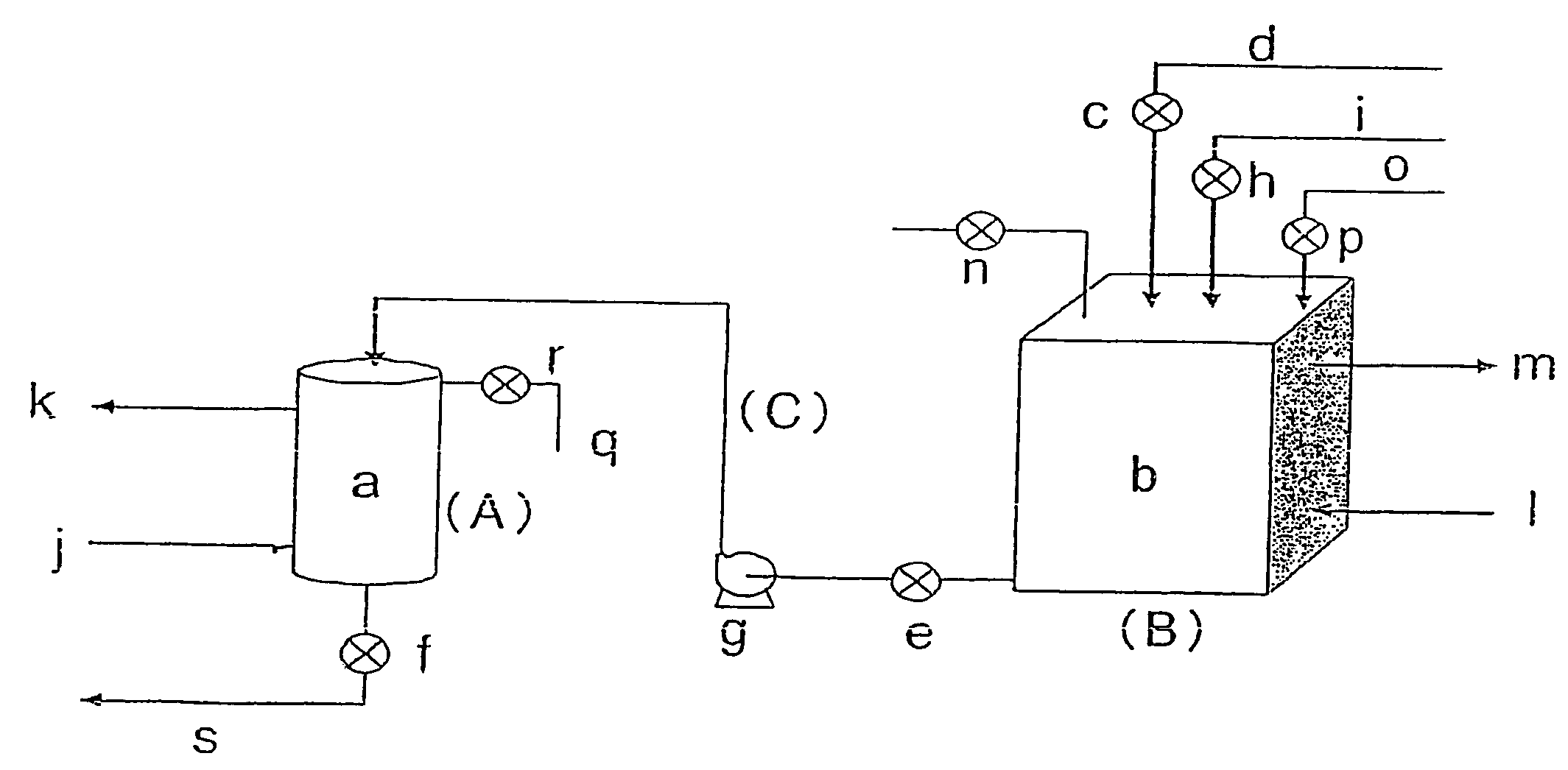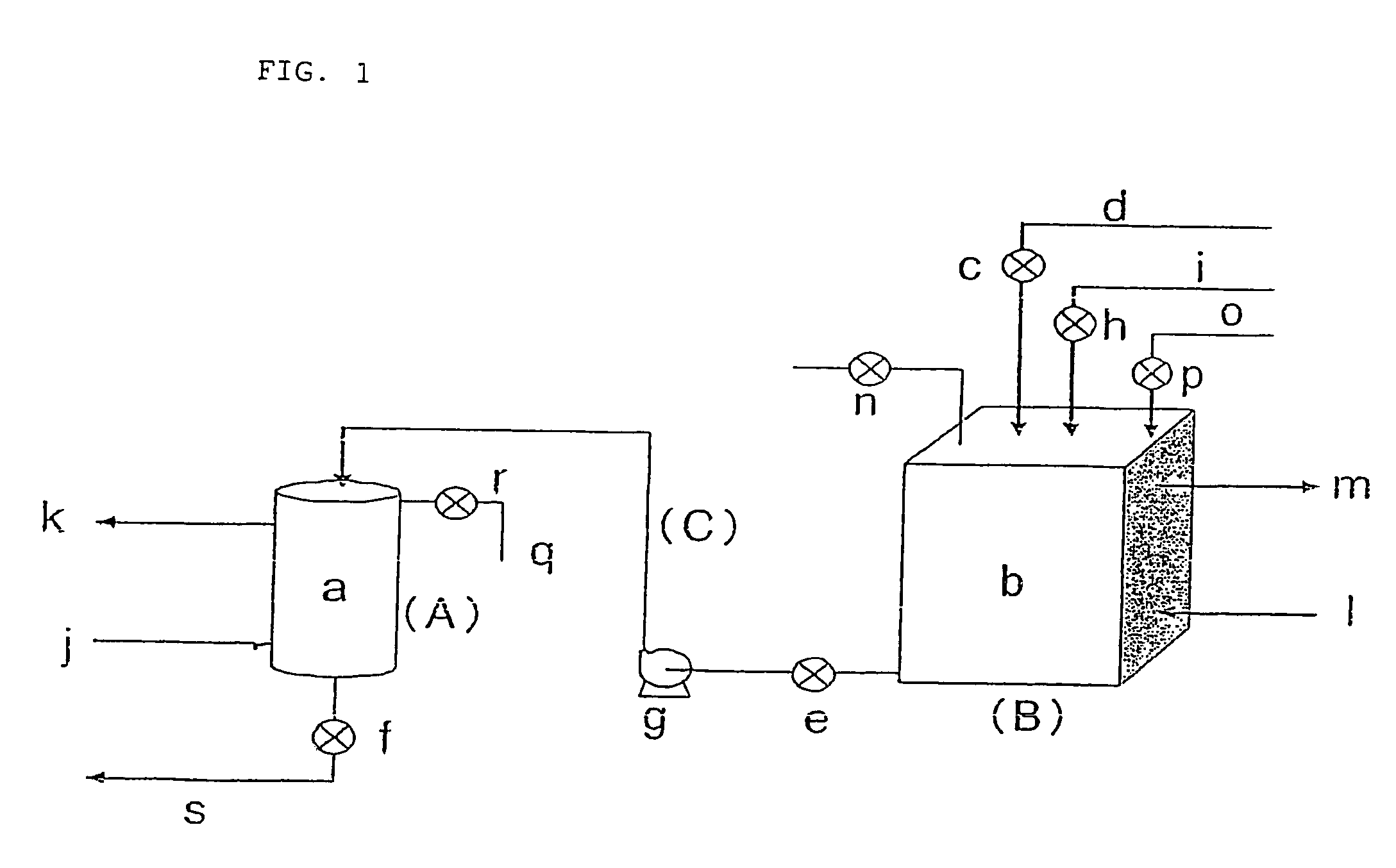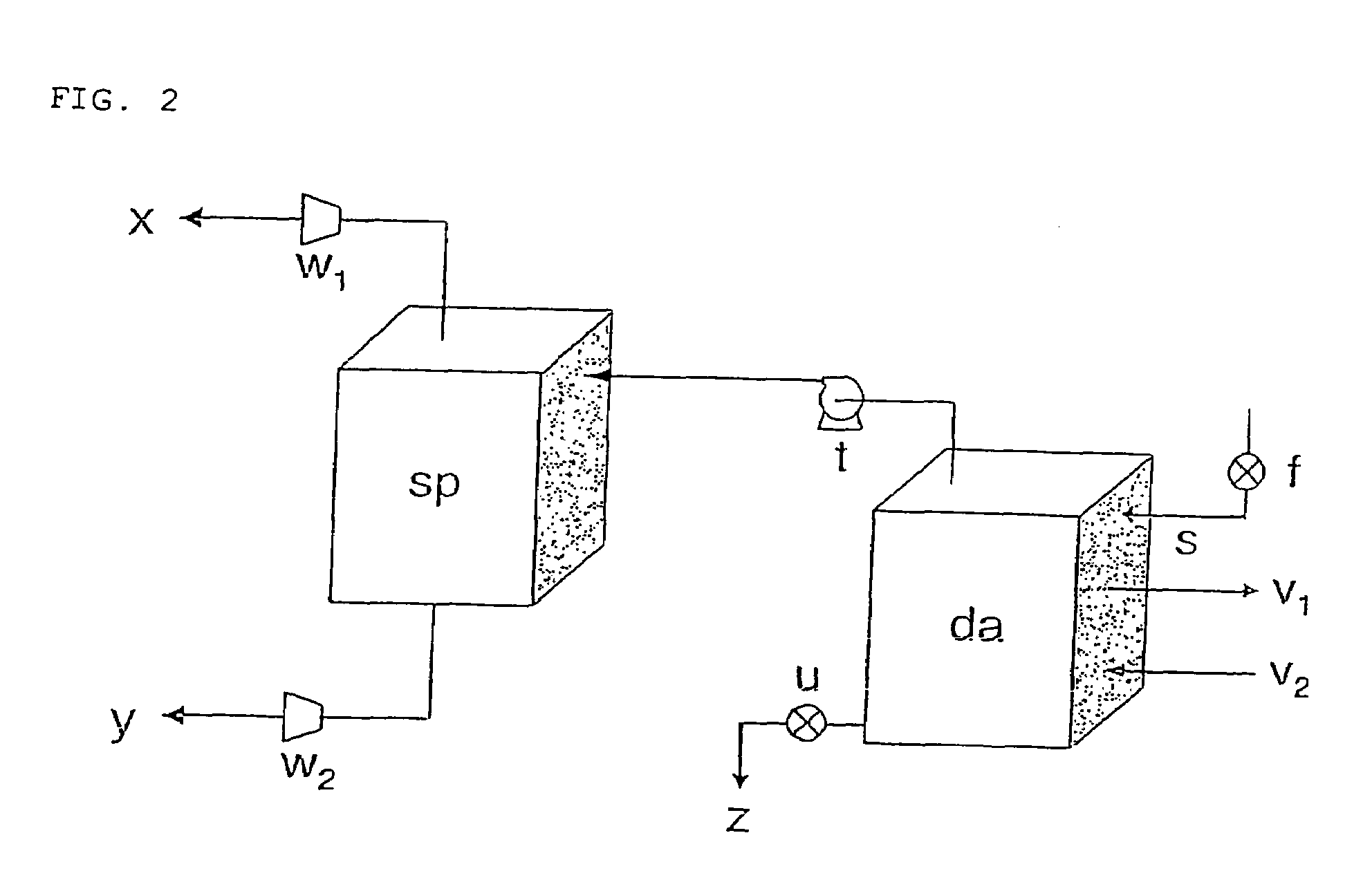Process for producing amino acid or salt thereof by column technique and production apparatus thereof
a technology of amino acid and column technique, applied in the direction of amphoteric ion exchangers, nuclear engineering, water/sewage treatment by ion exchange, etc., can solve the problems of unavoidable increase in production cost, unavoidable generation of commensurate by-products, complex whole process, etc., and achieve the effect of reducing pressur
- Summary
- Abstract
- Description
- Claims
- Application Information
AI Technical Summary
Benefits of technology
Problems solved by technology
Method used
Image
Examples
example 1
Purification of L-glutamic Acid Fermentation Liquid
Preparation of Carbonate-Type Anion Exchange Resin
[0106]A strongly basic anion exchange resin SA-10A manufactured by Mitsubishi Chemical Corporation was used as an anion exchange resin. First, 4 L of a 0.75 mol / L aqueous sodium hydrogen carbonate solution was passed through 0.4 L of the chlorine-type anion exchange resin at 1 L / h for 4 hours to convert the ion exchange resin into a carbonate-type. The resin was thoroughly washed with pure water.
Adsorption Step
[0107]The whole amount (0.4 L) was packed in the pressure tight column a in FIG. 1. FIG. 1 is referred to in the following explanation. Into the reservoir tank b in FIG. 1 was introduced, from the liquid feed inlet o, an L-glutamic acid-containing aqueous solution (bacteria body-treated fermentation liquid) of pH 7 having an L-glutamic acid content of 122 g / L, from which fermented bacteria body had been removed using a microfiltration membrane, followed by closure of the valve ...
example 2
Purification of L-phenylalanine Fermentation Liquid
Adsorption Step
[0111]An adsorption operation of L-phenylalanine onto the anion exchange resin prepared by preparation of carbonate-type anion exchange resin in Example 1 was carried out in accordance with the procedure in Example 1. At that time, as a fermentation liquid, a liquid obtained by removing bacteria body with a microfiltration membrane and converting the ionic form of L-phenylalanine into an anion form by controlling the pH to 10 using an aqueous ammonium solution was used. The concentration of L-phenylalanine was 29.7 g / L. The feed flow rate to the pressure tight column was 0.6 L / hr and the liquid-transferring time was 2.67 hours. Moreover, the pressure of the reservoir tank was 0.4 MPa, the pressure of the pressure tight column was 0.5 MPa, and the temperature was 20° C. During the adsorption reaction, no bubble formation of carbon dioxide gas occurred. Thereby, a breakthrough liquid of 1.6 L / hr was obtained.
Washing Ste...
example 3
Purification of L-proline
Adsorption Step
[0115]An adsorption operation of L-proline onto the anion exchange resin prepared by preparation of carbonate-type anion exchange resin in Example 1 was carried out in accordance with the procedure in Example 1. A liquid obtained by converting the ionic form of L-proline into an anion form by controlling the pH to 10 using an aqueous ammonium solution was used. The concentration of L-proline was 106 g / L. The feed flow rate to the pressure tight column was 0.6 L / hr and the liquid-transferring time was 2.67 hours. Moreover, the pressure of the reservoir tank was 0.4 MPa, the pressure of the pressure tight column was 0.5 MPa, and the temperature was 20° C. During the adsorption reaction, no bubble formation of carbon dioxide gas occurred. Thereby, a breakthrough liquid of 1.6 L / hr was obtained.
Washing Step
[0116]Then, the resin was washed in the same manner as in Example 1. Pure water was used as a washing water and the flow rate was 0.8 L / hr, the...
PUM
| Property | Measurement | Unit |
|---|---|---|
| pressure | aaaaa | aaaaa |
| pH | aaaaa | aaaaa |
| temperature | aaaaa | aaaaa |
Abstract
Description
Claims
Application Information
 Login to View More
Login to View More - R&D
- Intellectual Property
- Life Sciences
- Materials
- Tech Scout
- Unparalleled Data Quality
- Higher Quality Content
- 60% Fewer Hallucinations
Browse by: Latest US Patents, China's latest patents, Technical Efficacy Thesaurus, Application Domain, Technology Topic, Popular Technical Reports.
© 2025 PatSnap. All rights reserved.Legal|Privacy policy|Modern Slavery Act Transparency Statement|Sitemap|About US| Contact US: help@patsnap.com



